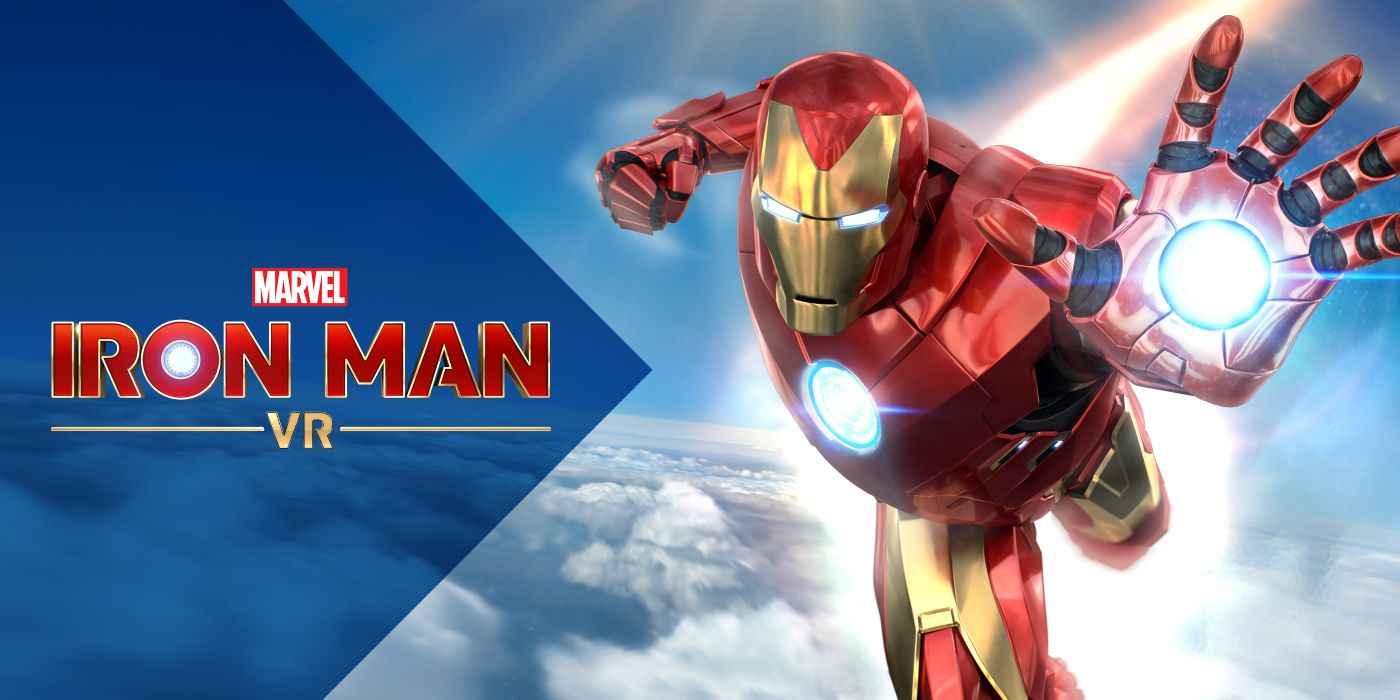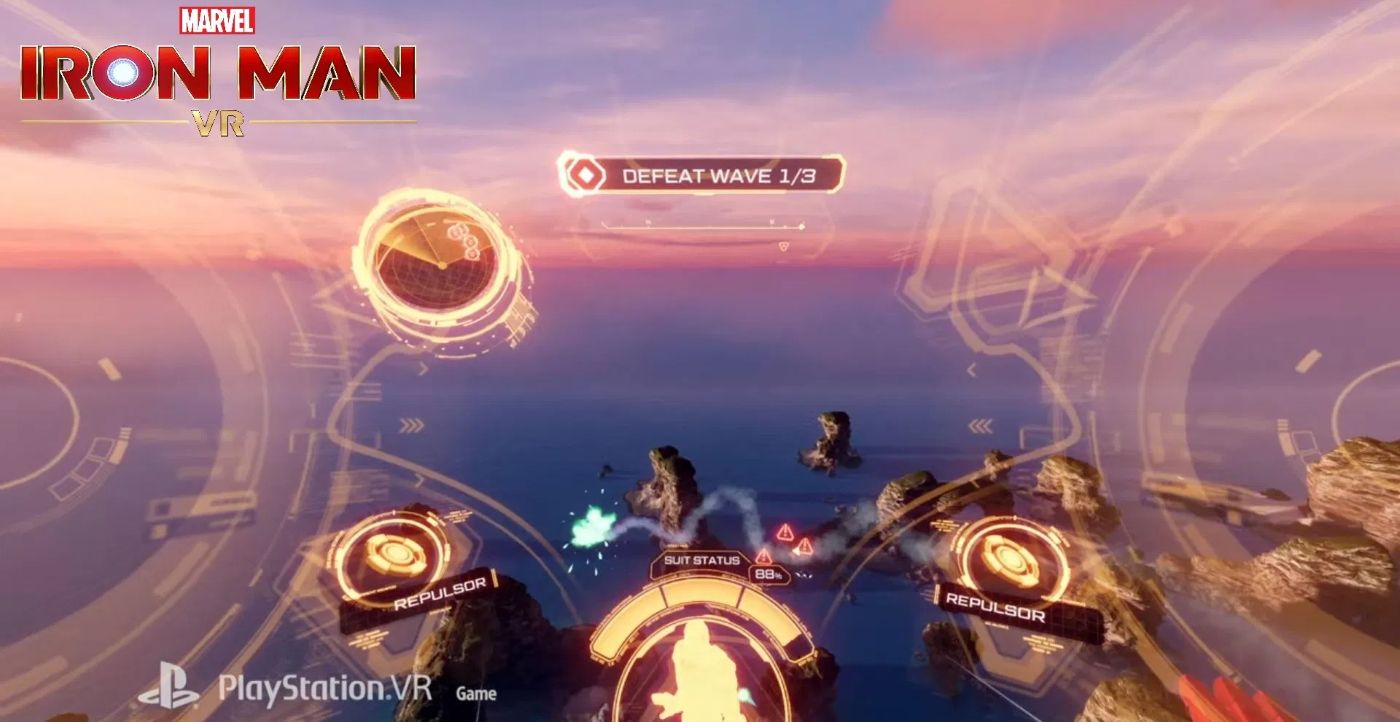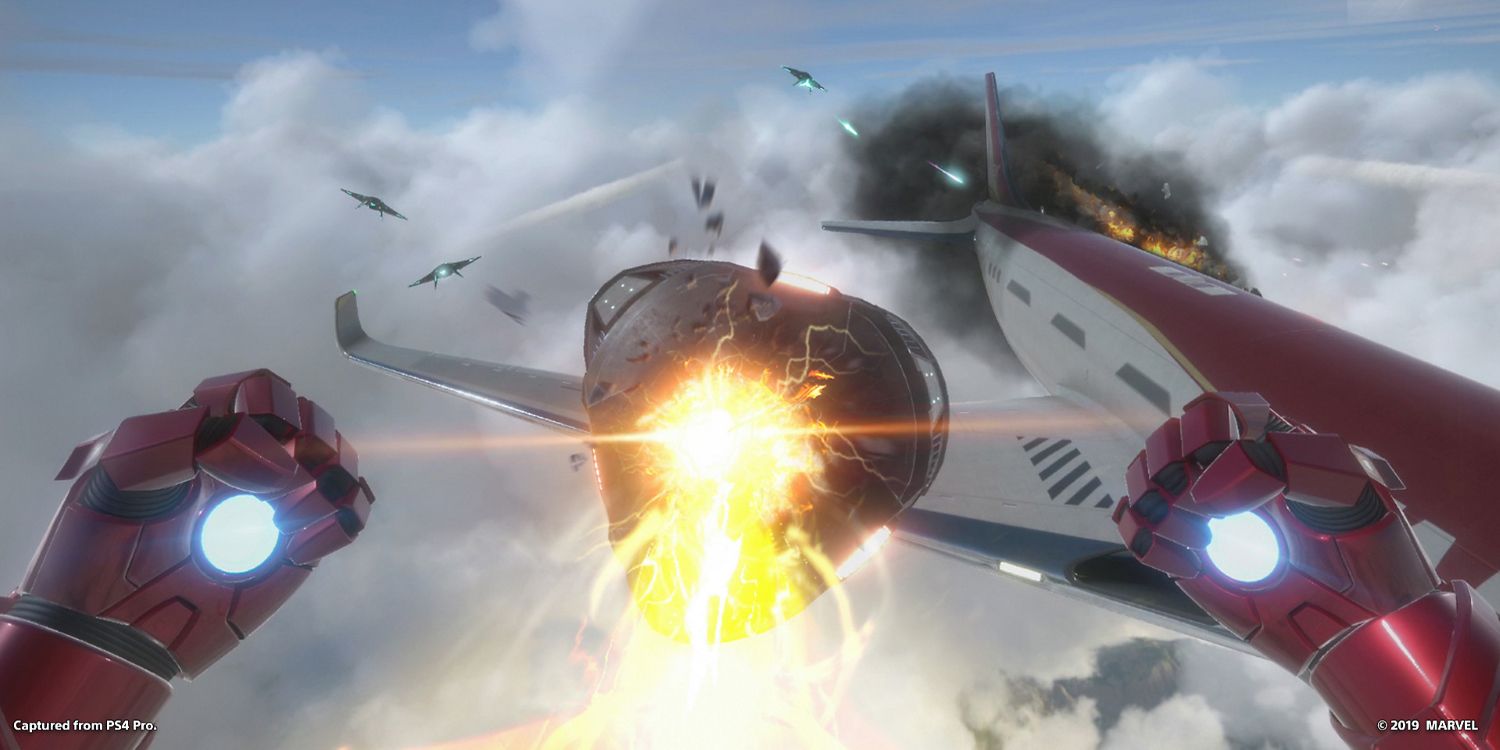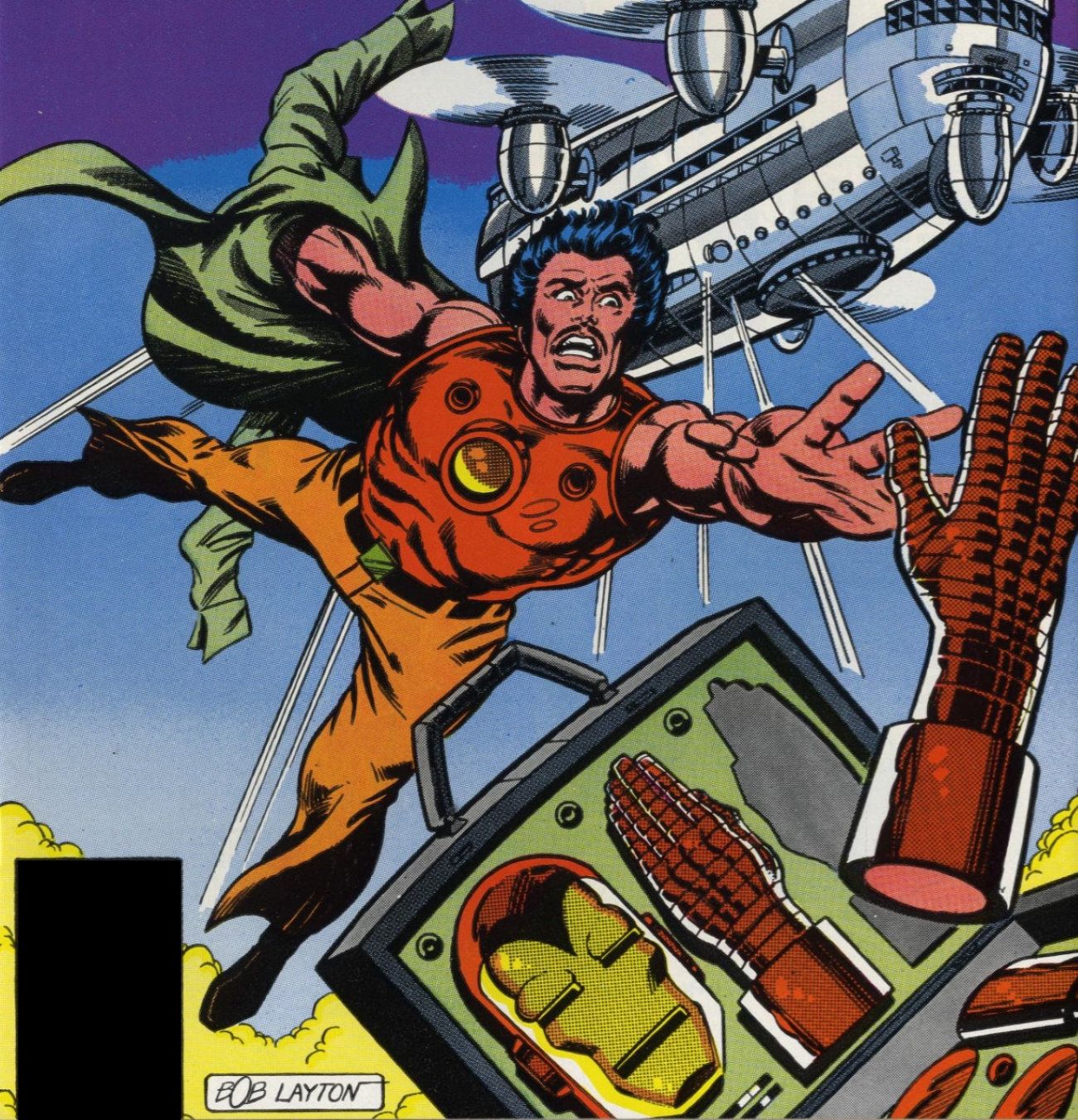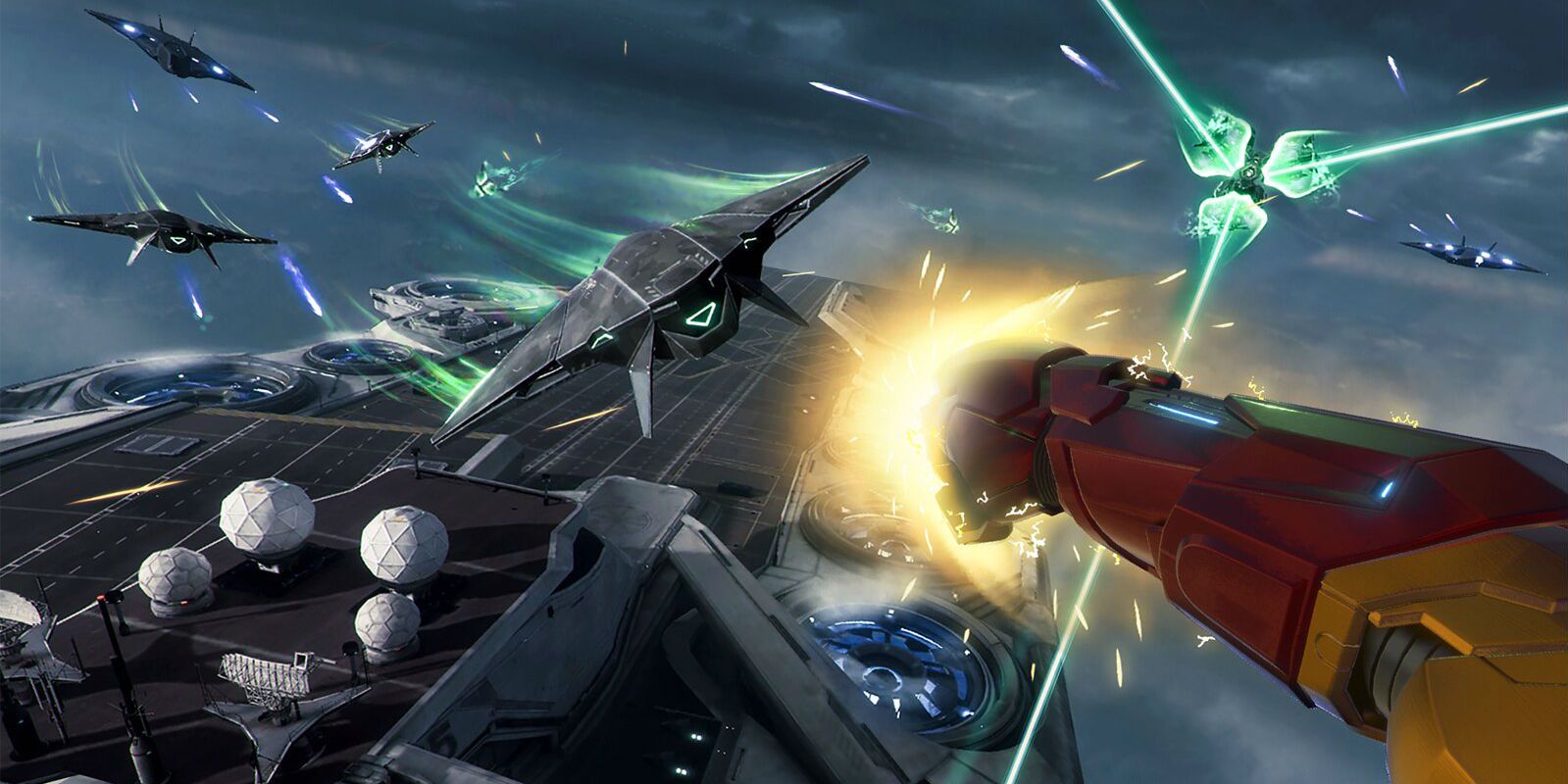Until now, comic fans longing to become a superhero have had to live vicariously through Marvel's blockbuster films, but Marvel's Iron Man VR is looking to change all that. Teaming up with Sony's PlayStation VR, the game promises to show players what it actually feels like to be Tony Stark. And not just when he's operating his billion dollar armor, either.
The premise alone has awarded Iron Man VR's developer Camouflaj with lengthy lines at every trade show and gaming convention where it's been brought for demonstration. That highlights the challenge for the team: given the virtual reality games and experiences brought to market so far, making such a lofty promise is hard to believe without playing it. Much of that doubt was softened after playing Iron Man VR hands-on for ourselves, but just as we had bought in to the flight and combat, the developers revealed that is only scratching the surface of the game's true ambitions.
RELATED: Ant-Man & The Wasp Actress Teases Ghost's MCU Return
Screen Rant had the chance to play the existing demo of Iron Man VR during this year's New York Comic Con (where attendees were, once again, lining up to see if 'feeling like Iron Man' was more than just marketing hype). In hindsight, the clumsy mastery of the controls in the first few seconds should have been expected, reflecting Tony Stark's own apprehension in his first MCU film. But by the end of the twenty minute demo--spent flying, boosting, rocket-punching, and drone-annihilating over the rocky waters beside Tony's Malibu home--the superhero confidence behind every repulsor blast, rapid acceleration, and (imagined) superhero landing was surprising, to say the least.
It was only after playing through the demo that Sony Interactive and Marvel Games revealed the story behind the experience, bringing Ant-Man and The Wasp's most recent enemy, Ghost, into the game's story as the antagonist to Tony Stark. In the fiction of the comic books, an enemy who can alter how they're actually perceived is a perfect choice for a video game based on that exact deception. But in terms of game design, the challenge of putting players into a narrative as Tony Stark is something else entirely. Thankfully, we got to sit down with Iron Man VR creative director Ryan Payton (with an appearance from writer Christos Gage) to learn how his team is trying to break new ground in the VR space, while also opening doors for future developers to walk through.
Getting to play the demo for myself definitely convinced me I could get the hang of it faster than I expected. But the bigger surprise is bringing in Ghost, and getting to be Tony outside of the suit, too. How do you go about balancing that gameplay with story? It's got to be different based in a VR experience.
Ryan Payton: I think one of the really interesting challenges of making Marvel's Iron Man VR is that we want to make sure the game is not only a good simulation of what it's like being Iron Man, and doing the flying, and the shooting, and the HUD and all that. But it's also a really deep Tony Stark-driven story. So the way the game works is no different than other games that at least I've worked on in the past. We've got our big 20, 30, 40 minute missions, but then interspersed with a bunch of real-time, fully VR, interactive cinematics where you're experiencing it as Tony.
Obviously the film version of Iron Man is going to be present in most people's minds, so I'm curious how you approach creating a new Tony. Because you obviously don't just want to recreate what people know. You have to make a Tony that they're going to actually be stepping into.
We wanted to make sure that the game is really leveraging the storytelling strengths of VR. That's one of the biggest challenges that we faced, is that where other games might have just a third person cinematic that you're watching, which works great for a lot of titles, but when you're in VR you want to be a part of that experience. You want to be in first person, being Tony. So we really wrote the story to leverage those innate strengths of VR. So players are Tony, but they're in first person, they can see their body, they can see not only their hands but their full arms, with all the IK (inverse kinematics) tech the team built. But also select different dialogue, very Tony-esque dialogue choices. Then interact with those really iconic Marvel characters that will react to your different choices. Allow players to not only have those character moments, but also be in these iconic spaces, too. Whether it's Tony's mansion, his garage, the Helicarrier, or any of those spaces you'd want to be.
So when you have Ghost enter the story, to basically oppose the player, how does that change?
I hope I'm not revealing too much by saying the demo you played is very early in the game. It's pre-Ghost attack. You can tell from the tone of the game that we want players to feel liberated by checking out the impulse armor, and by getting used to how they're flying with that new armor. Just like Tony is feeling in the story, because that's his first time testing out the armor as well! We wanted to make that character and player story really similar in that regard. And then the story really takes off with the next mission, which is a mission that takes place in Tony's private jet. That's the inciting incident, when Ghost attacks Tony and Pepper using some of his own deadly machines.
[Writer Christos Gage interjects]
CG: Where are Tony and Pepper when this happens?
RP: Tony and Pepper are in their private jet.
CG: Yes, the jet. And then what happens? They--I'm sorry but it's the cover, hold on. I got to pull up the cover... [Takes out phone]
RP: [Laughs]
CG: I knew off the top of my head what issue it was, can you believe that? Iron Man #118! So you get to do this in the game. See, he's falling out. He doesn't have all his armor on yet. So he's got to catch it in the air!
RP: Yeah that's from the "Demon in a Bottle" story in the late 1970s run. That was the core inspiration for us in building the game.
Wow, so do you just have a wish list when you start this, of all the fan service moments you want to get into the game? I mean how do you control that urge, and not just go nuts with the opportunities you have?
Well, one of the least exciting ways I can answer your question is: VR is so new right now, it's exciting, but there's so many things that developers like our company Camouflaj have not yet learned how to accomplish. So in a lot of ways, what we wanted to do with Marvel's Iron Man VR is create a big, epic, AAA-level VR title, but also be smart about the bets that we're making. Because if we go too wide we run the risk of not having that level of quality for every single asset, for every single feature that we put into the game.
We're taking on a lot of challenges when it comes to having a full 360 flight in the game, having the full armor there--again, not having just the hands or the gauntlets present, but having your full armor there--all the different characters we have to build. So what we ended up doing is... we had our list of things that we definitely wanted to have in the game. But we had to have a certain level of restraint. Because again, we wanted to focus on fewer, but really, really big moments and big features to make sure they hit that level of quality that I think everybody wants to see in the next wave of VR titles.
That has to be the challenge of VR right now, right? Every time there's a new technology it starts off with a sort of mini-game mentality to prove the concept. But then adding in an actual story, an actual narrative... I can't imagine the anxiety of taking your hands off the controls and trusting it to a player.
Oh yeah.
Have you been surprised in testing the game with players? It has to be the same for you, Christos, as a writer. If someone skims over your dialogue, or they're maybe not looking at the thing you want them to be looking at, at the time you want them to be looking at it.
CG: Well speaking of dialogue, what you actually want--and this is true for all creators, colorists, letterers... ideally it's invisible, in the sense that the person isn't thinking 'what great craftsmanship!' They're thinking 'this is really exciting and I'm really into this.' That's the goal, right?
RP. Yeah. The only reason this game exists, and the only reason that we're partnered with Marvel, and that we're partnered with PlayStation on this game, is because the game feels great from the moment that you get into the suit. You have your Move controllers, you've got the headset on, and you're flying around as Iron Man. The pitch started with the prototype where players are flying around, and it looks cool and interesting on a flat screen. But it's not until someone actually plays it that they become true believers, right?
So to a certain extent, watching players play it and learn is a little bit nerve-wracking. Because we want them to instantly get it within 30 seconds. But because the experience is definitely a new kind of paradigm, in terms of how locomotion works in VR, we know there's going to be a little ramp up. But we know that once they play through that initial demo, that 15 to 20 minute demo, we tend to see the vast majority of people are sold on the idea and the concept. Then it's just a matter of showing them the game is beyond just a single stage area where you're learning how to play and fly. It's an actual big, AAA VR experience.
Well my final question, after playing the Batman: Arkham VR, must be whether or not you can caress Nick Fury's face.
CG: [Laughs] You can actually pull aside his eyepatch, and stick your finger... no, that's just nasty.
That has to be something the developers laugh hardest at, right?
Yeah, it's an interesting balance we have to take as developers, especially with VR. Because we don't know what the players are going to do. There's this kind of... 'If You Give a Mouse a Cookie' kind of problem where, if we allow each character to respond--or if we build responses to each player action, for example throwing a cup at pepper while she's trying to talk to you, then we encourage the players to want to experiment more, right? However we want those 3D characters to feel believable and realistic, and like they're in that space with you. So within reason, we try to have the characters respond to you. I think one of the ways that we do that is the eye tracking and the head tracking that we have for the characters. So if you do move around in the space they're following your body language. It's all about that presence of those characters in VR so players feel like they're in the same room with Nick Fury. Which does feel really interesting an immersive in the game.
Marvel’s Iron Man VR has an official release date of February 28, 2020, on PlayStation VR.

